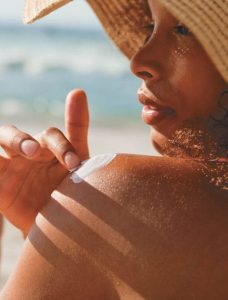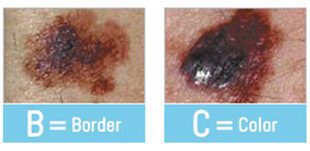By Dr. Alan Brown


Most UV exposure originates as energy from the sun, reaching the surface of our planet as two types of UV light: UVA rays and UVB rays. Made up of varying wavelengths, each kind emits a different level of energy that affects the skin differently. UVB rays pose a greater risk of skin cancer, where UVA rays are responsible for visual changes such as aging, wrinkling and loss of elasticity.
As any Florida resident knows, avoiding UV exposure entirely is nearly impossible in the Sunshine State. While invisible to the naked eye, both types of UV light will equally damage your skin and can potentially cause skin cancer. When these rays come into contact with skin, melanin in these cells work to absorb the UV light. A developing tan indicates that your skin has been injured by the sun’s rays. When the amount of UV damage exceeds the amount of protection that your skin’s melanin can provide, it results in a sunburn.
At a cellular level, harmful UV rays affect how skin cells appear, grow and repair over time. The good news is that there are several simple steps you can take to reduce the risk of a future skin cancer diagnosis. At Advocate Radiation Oncology, we counsel our patients to follow these five recommendations to avoid harmful UV rays and protect the body’s best natural defense – your skin.
5 Ways to Avoid Harmful UV Exposure
1. Wear protective clothing and a hat. According to research, clothing can be one of the most effective barriers between our skin and the sun. Try to cover as much skin as possible and choose a tightly woven fabric to maximize protection.
2. Apply SPF 30+ sunscreen. Reach for a broad-spectrum, water-resistant variety. Ensure your sunscreen has UVA symbol or offers a minimum four-star rating. Use a generous amount and reapply every two hours, no matter what the directions advise. Don’t forget your ears, neck and lips!
3. Avoid tanning booths. Not all UV rays come from the sun. Manmade sources like tanning beds deliver concentrated doses of UV light that can cause melanoma and other skin cancers. Far less safe than the sun, indoor tanning increases the risk that a benign mole may progress into melanoma. Researchers estimate that UV light from tanning beds causes an estimated 400,000 cases of skin cancer each year in the United States.
4. Accessorize with sunglasses. Protective eyewear like sunglasses help shield your eyes from the rays that would otherwise damage your eye’s cornea, lens and surface tissue. Additionally, long-term sun exposure increases the chances of developing cataracts, growths on or near your eyes, or even eye cancer.
5. Stick to the shade. Outside of heat-related conditions like sunstroke, shade helps to reduce your exposure to solar UV radiation. Head for shade during the hottest portions of the day, which typically fall between 10 a.m. and 4 p.m.
Keep in mind that you will likely be the first to spot signs of sun damage on your skin. That’s why Advocate Radiation Oncology encourages patients to complete an annual skin check. Be sure to use a hand mirror to inspect hard-to-see areas like your back. If you find any issues or observe changes to existing moles, discuss them with your doctor right away. Skin cancer is much easier to treat when caught early.
About the Author
Dr. Alan Brown is a board-certified radiation oncologist at Advocate Radiation Oncology, a locally owned and operated practice with convenient locations in Southwest Florida.
Cape Coral Office
909 Del Prado Blvd. S
Cape Coral, FL 33990
(239) 217-8070
Bonita Springs Office
25243 Elementary Way
Bonita Springs, FL 34135
(239) 317-2772
Fort Myers Office
15681 New Hampshire Ct.
Fort Myers, FL 33908
(239) 437-1977
Port Charlotte Office
3080 Harbor Blvd.
Port Charlotte, FL 33952
(941) 883-2199
Naples Office
1775 Davis Blvd.
Naples, FL 34102
(239) 372-2838
 Southwest Florida's Health and Wellness Magazine Health and Wellness Articles
Southwest Florida's Health and Wellness Magazine Health and Wellness Articles

